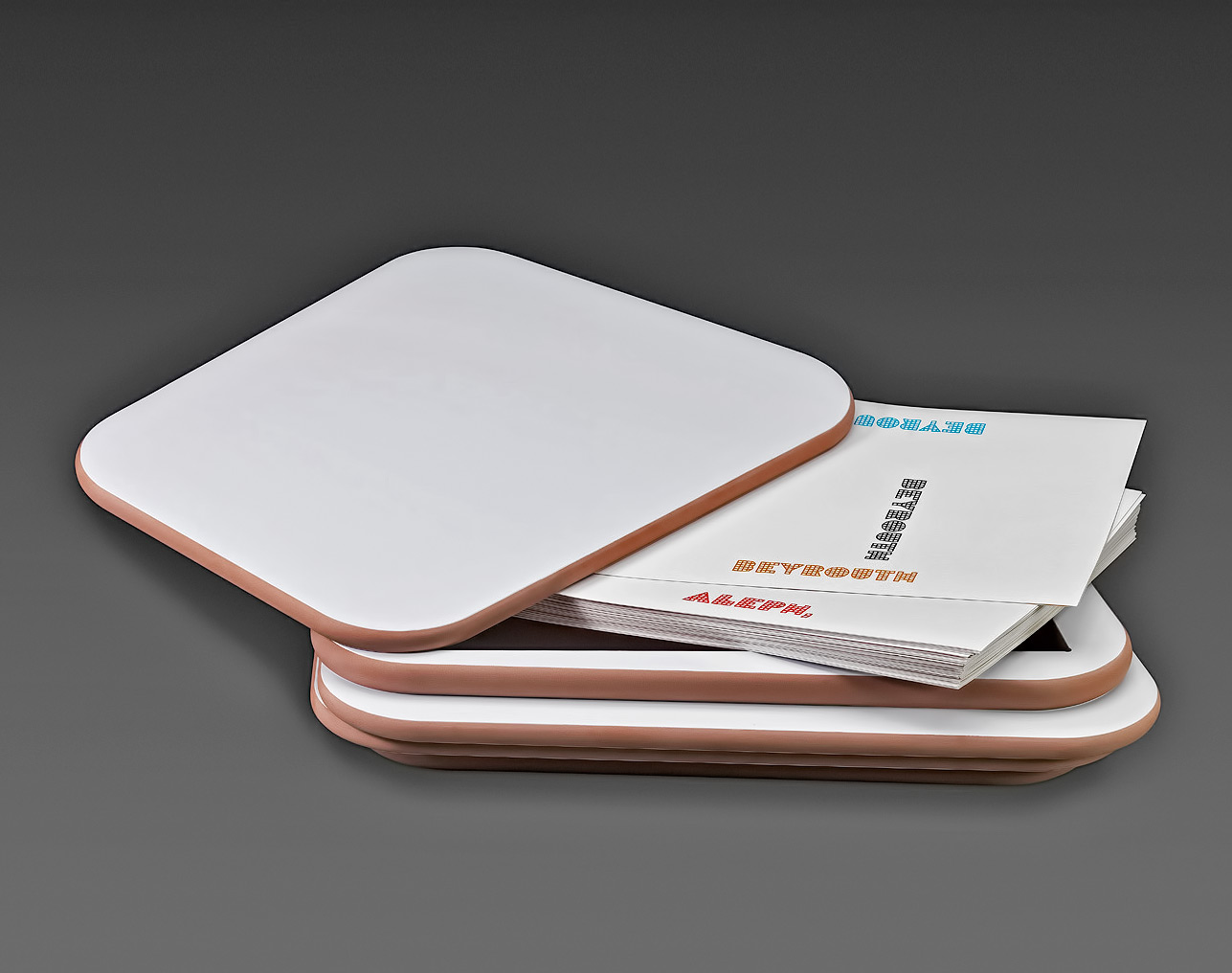
BEYROUTH
Livre d’artistes publié en 2008, par les éditions Take5 (Genève).16 original signed photographs (12 black-and-white prints and 4 color prints)
by Gabriele Basilico, five of them taken in 2008 specially for the book,
completing the series from 1991 and 2003
All the photographs have been chosen jointly by the publisher and the artist for this edition
The text has been specially written for the book by Wajdi Mouawad, in French,
and translated into English by Bernard Hoeppfner
A facsimile of the author’s notebook has been reproduced and inserted in the tray case
The graphic design is the creation of Philippe Millot and Editions Take5
15 copies are enriched with a tray case designed by Robert Stadler.
The tray case is made of brown resin layers held by white plastic sheets evoking teutonic plates
The 25 remaining copies include a cardboard tray case covered with serigraphed dark-gray paper evoking armor
Each copy is signed by Gabriele Basilico and Wajdi Mouawad
(and by Robert Stadler for the first 15 copies)
An edition of 40 copies, of which 15 rest in a tray case designed by Robert Stadler
11.8 x 15.3 x 2.8 inches - 15.3 x 20.8 x 4.3 inches (white tray case)
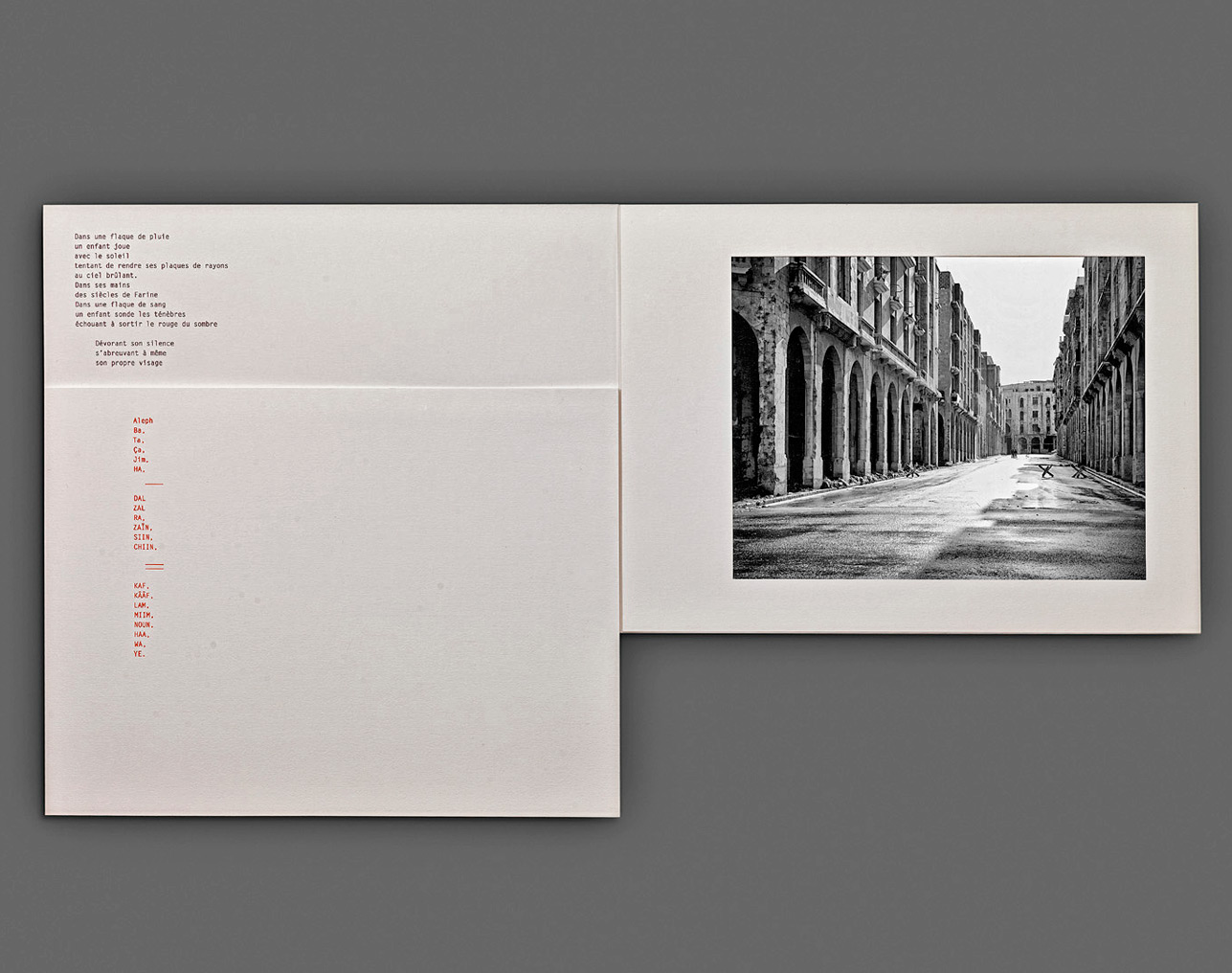
When they evoke Beirut – Beyrouth in French –, neither Gabriele Basilico nor Wajdi Mouawad seek to impose their personal vision of the city. According to Wajdi Mouawad, “My plays aren’t about war, but about the attempt to remain human in an inhuman context.”
Like Wajdi Mouawad, Gabriele Basilico seeks objectivity as a way of making our humanness resonate within us. Both of their works are overwhelming: Gabriele Basilico’s photographs are silent, neutral, highly objective images. As the artist explains, the photographer’s eye has to give time to the places he captures so as to penetrate their essence. For Basilico this involves adopting a philosophical and existential attitude that allows him to find meaning in the outside world. Thanks to his non-compromising sense of ethics and his close attention to image quality, Basilico demonstrates with his images a rigor and a perspective that prevent us from glorifying the past. Rather, they represent an unflagging quest for objectivity..
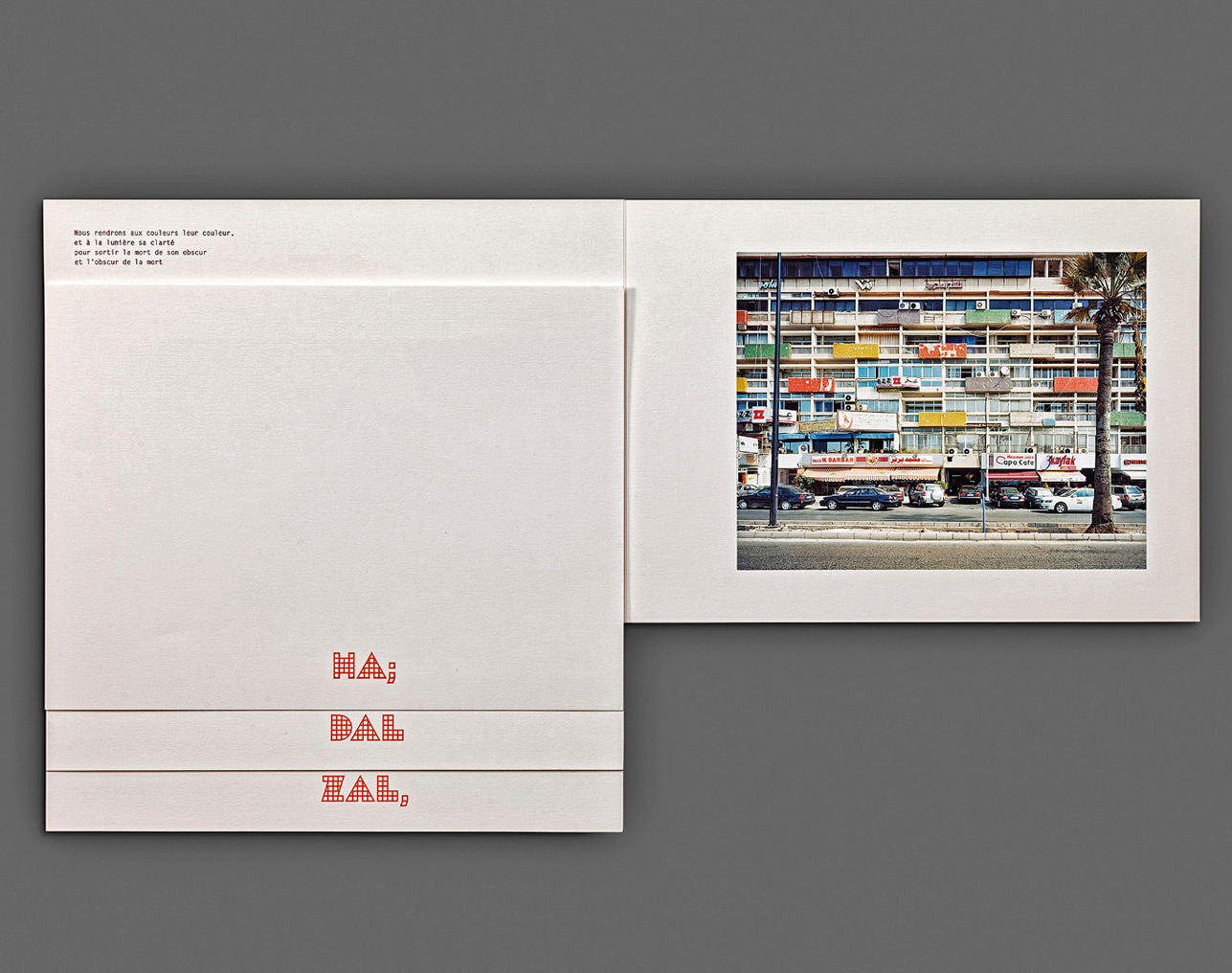
Although not narrative, his photographs manage with great strength to expose the still-open scars of a city that is constantly being destroyed and rebuilt, and which has an extraordinary capacity for resilience; like the phoenix, Beirut seems constantly to rise from its ashes. For this reason, the publishers deliberately mixed photographs taken from different times, unfettered by chronology: images of a destroyed city taken in 1991 right after the war, images of the reconstruction from 2003, images evoking destruction for the pur-poses of construction, and current shots taken for the book by Gabriele Basilico in Beirut in 2008. The idea was to disregard the classical time frame of “before and after,” and concentrate on the idea of perpetual transformation.
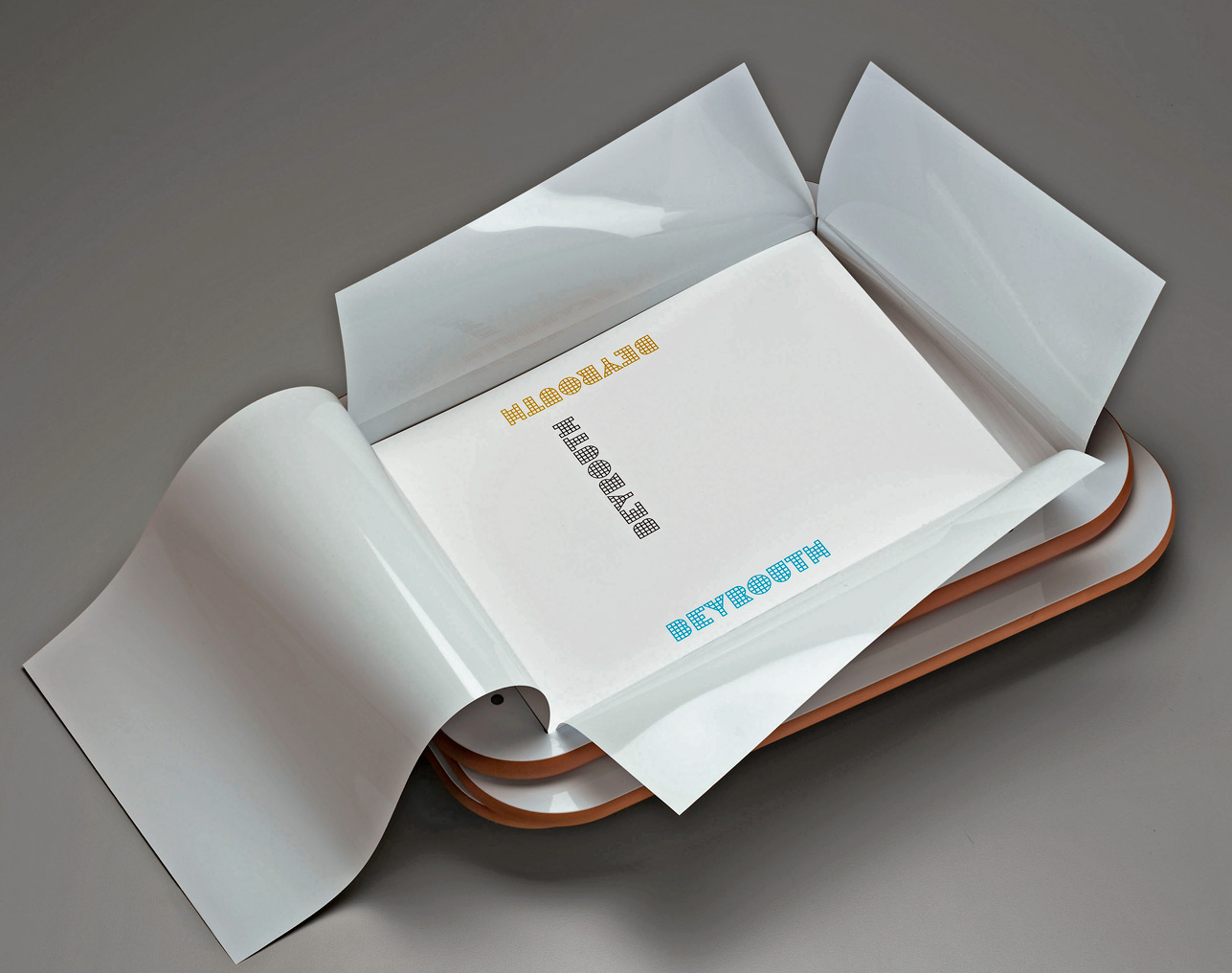
Although not narrative, his photographs manage with great strength to expose the still-open scars of a city that is constantly being destroyed and rebuilt, and which has an extraordinary capacity for resilience; like the phoenix, Beirut seems constantly to rise from its ashes. For this reason, the publishers deliberately mixed photographs taken from different times, unfettered by chronology: images of a destroyed city taken in 1991 right after the war, images of the reconstruction from 2003, images evoking destruction for the pur-poses of construction, and current shots taken for the book by Gabriele Basilico in Beirut in 2008. The idea was to disregard the classical time frame of “before and after,” and concentrate on the idea of perpetual transformation.
Written specially for this book, Wajdi Mouawad’s text condenses all the substance of the playwright’s work. For the author, it has a particularly strong symbolic importance since it is also his first incursion in the poetic register. The wounds of exile, the absurdity of fratricidal war, and the astonishing resilience of human beings are described in a powerful–and beautiful– way.
A true synergy occurs in this book between the various participants–author, photographer, graphic designer, translator, editor. The interplay between Gabriele Basilico’s photographs and Wajdi Mouawad’s text is breathtaking. With this in mind, and in respect to the gravity of the subject, Philippe Millot created a simple and airy layout. The importance of the color white, a symbol of hope, contrasts with an almost telegraphic typography alluding to the pragmatism of wartime. Design is at the service of art, not yielding to it but giving it its space. The typeface used for the titles, inspired by the construction blocks used in the Middle East, evoke their variable geometry, and also the form of mashrabiyas.
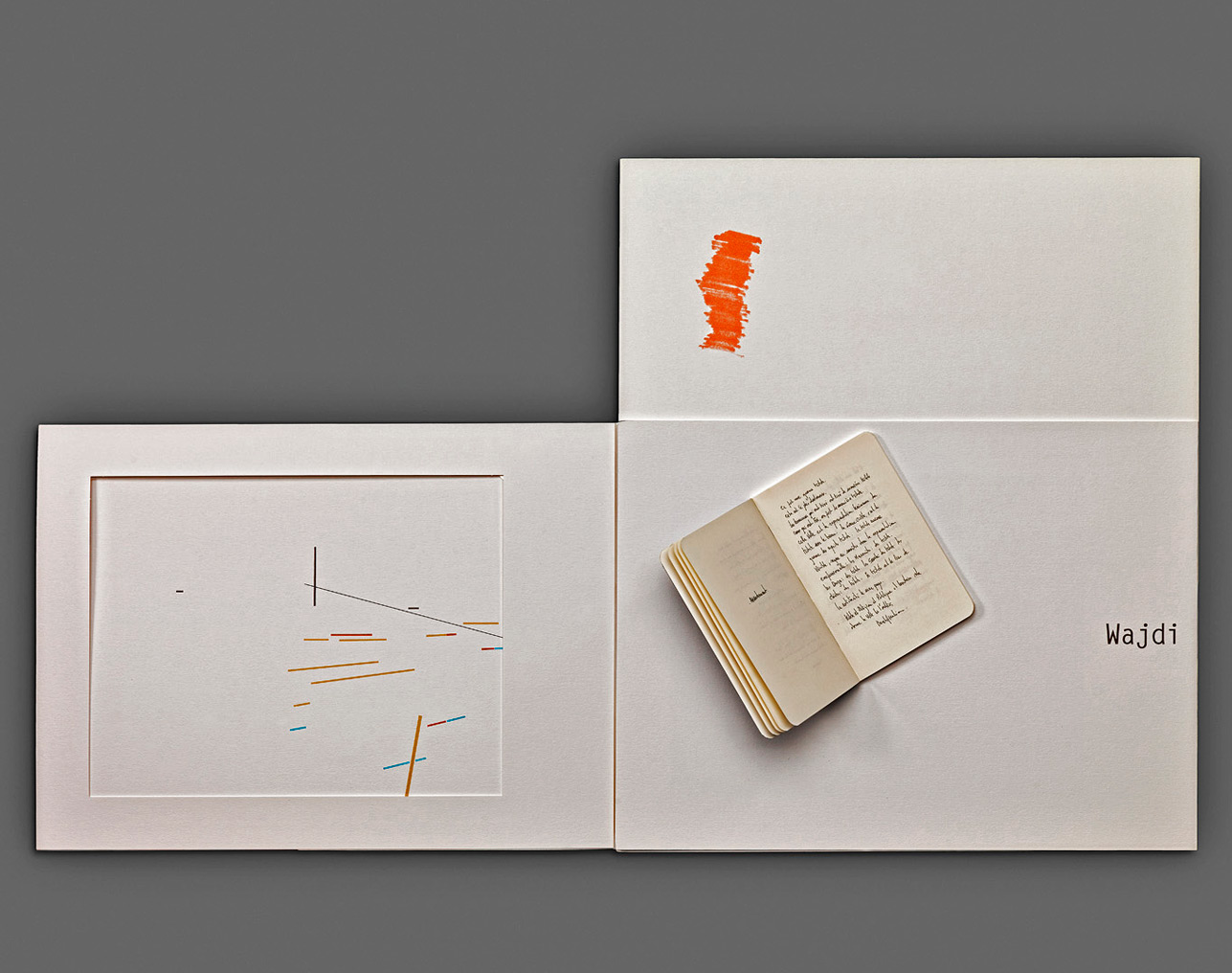
For the architecture of the book, the graphic designer and publisherbased it on the little Moleskine notebook in which Wajdi Mouawad wrote and drew his texts. The Arabic alphabet gives its rhythm to the pages like a breath of air. This dialectic between the Arabic and Latin alphabets highlights the rupture of exile and the importance of language in the identity of a human being.
The author’s powerful description of the “tectonic plates of grief,” an unstable equilibrium that characterizes the city in times of war, inspired designer Robert Stadler for the tray case of the book. Referring to a theory, established by the Russian physicist Kolmogorov in 1941, that some objects never have a fixed shape, the designer has created a random stack of plates that could have shifted after an earthquake. These strata, constructed with architect’s foam sandwiched between sheets of white composite, reflect Gabriele Basilico’s training as an architect and his modernist restraint. Another case was proposed for the regular edition, made of metallic paper evoking an armor.
 FR
FR